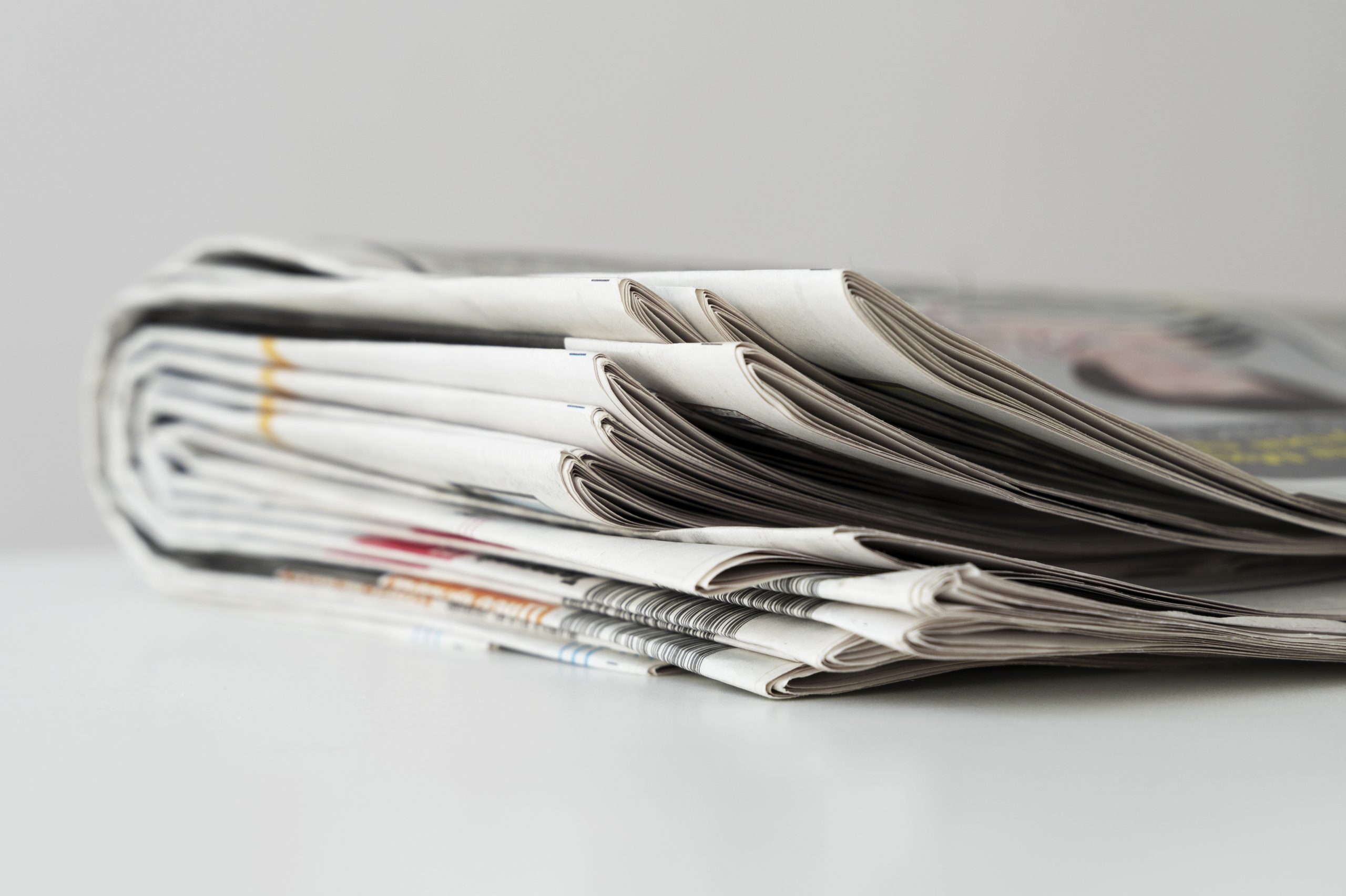Earlier this week, two Democratic National Committee members, Washington Monthly Contributing Writer David Atkins and Michael Kapp, articulated a list of proposals the next party chair should embrace. At the top of the list was “Commit to funding progressive/liberal alternative media that can help drive truthful narratives year-round and combat far-right misinformation.”
The objective of de-gaslighting the media landscape is warranted. Elon Musk turned a global public square known as Twitter into a personal propaganda machine called X. In a welcome move, traditional media has engaged in more fact-checking since Donald Trump ran for president in 2015 but couldn’t shake their “negativity bias” which made depictions of the economy in 2024 far worse than warranted, prompting many voters to look past Trump’s documented record of systematic lying.
But I can’t help feeling some deja vu. Twenty years ago, during the George W. Bush presidency, progressives were similarly frustrated by media bias and attracted to grandiose corrective projects. Air America Radio, a celebrity-studded national talk radio network, was launched in March 2004 in hopes of outmaneuvering the likes of Rush Limbaugh and Sean Hannity. Still, it never attracted a vast audience and could not stop Bush’s reelection.
Undaunted, in 2005, the once-conservative Arianna Huffington unveiled The Huffington Post, a news aggregation site styled as a counterpoint to the right-leaning Drudge Report and featuring a blog chock full of left-leaning notables in the entertainment and political worlds. Unlike Air America Radio, which sputtered out in 2010, HuffPost, as it’s now called, still lives, albeit in a reduced capacity. Huffington sold it in 2011 and left the company in 2016. Buzzfeed now owns it. Vivek Ramaswamy, the Trump ally, is a minority owner. HuffPost announced significant layoffs this month, with one reporter publicly wondering if the top executive is “bowing to MAGA.”
The most prominent “liberal media” survivor from the Bush years is MSNBC. However, becoming a stoutly liberal network was not MSNBC’s original plan when it first turned on its cameras in 1996. The joint venture of NBC and Microsoft was meant to be energetic and availing itself of the growing internet, but it wasn’t set up to be a liberal beacon. Ann Coulter and Laura Ingraham were two of the network’s first hires. Pat Buchanan was a fixture from 2002 to 2011. Before Joe Scarborough took a moderate tack on Morning Joe, he hosted a reliably conservative show called Scarborough Country that debuted in 2003, and he took over the morning slot after radio personality Don Imus, whose show the network simulcast, flamed out after a series of racist insults hurled at the Rutgers University Women’s basketball team. Tucker Carlson landed there in 2005 after losing his CNN Crossfire gig.
MSNBC was more interested in offering a wide range of opinions back then, including the left-wing Phil Donahue, who was given a show in 2002. But in that jingoistic period, station executives blanched at Donahue’s opposition to Bush’s invasion of Iraq. Donahue was soon replaced with Keith Olbermann, mainly known for his sports commentary.
Olbermann proved to be just as pugnaciously liberal as Donahue but with better anchorman skills. He pulled in relatively big ratings and became the network’s tentpole. In 2008, Olbermann used his clout to get Rachel Maddow, an Air America Radio host, the primetime slot after his. Now, MSNBC’s prime time was defined by explicitly liberal programming–a clear counterpoint to Fox News, as it is to this day.
However, the mere existence of an ideologically friendly media operation is not sufficient to broadly influence the national dialogue. I wrote a liberal self-help book in the aftermath of Bush’s reelection, Wait! Don’t Move to Canada! which was more optimistic about the prospects of Air America Radio and the liberal blogosphere than was warranted. I enthused they were “not cocoons that separate us from the country,” but “they create a megaphone that ensures that our voices are heard on our terms.” That proved to be more wishful thinking than reality.
MSNBC is a cautionary tale. In terms of profit and longevity, it is a more successful operation than perhaps any other liberal media project. But its commentary and analyses rarely travel far beyond devoutly progressive living rooms.
Democrats have sought media-based solutions to their political problems long before Trump and Bush. You can go back to 1953 when the Democratic National Committee launched something even more ambitious than the funding proposal floated by Atkins and Kapp–its own magazine, Democratic Digest. Here’s how The New York Times described the first issue:
The first edition of Democratic Digest, a pocket-size monthly magazine of the Democratic party, is off the presses and subscriber copies are in the mail, Clayton Fritchey, deputy chairman of the Democratic National Committee and editor of the magazine, announced today.
The initial run of the magazine, the first to be published on a commercial basis by a major political party, was 140,000 copies, Mr. Fritchey said, of which 100,000 will be placed on newsstands throughout the country Friday for sale at 25 cents a copy.
Mr. Fritchey said there were slightly more than 19,000 paid subscriptions, and at least 1,000 more were expected before the mailings were completed.
The four-color cover of the 112-page magazine carries a cartoon showing the Republican elephant sitting at a desk, reading a large book on “How to Balance the Budget,” with a smaller book inside on “How to Break 90.” A bag of golf clubs hangs on a chair.
The featured article in the first edition is “A.W.O.L.–Administration Without Leadership.” In this, prominent Republicans and newspapers friendly to the Administration are quoted, charging lack of guidance from the White House in the nation’s affairs.
I happen to own a copy of Democratic Digest dated November 1956, published ahead of that year’s election. The issue attempted to paint President Dwight Eisenhower as a dimwit controlled by corporate interests and right-wingers. It offered a deluge of data points intended to show Eisenhower mishandled the economy and failed to contain inflation. There were literally 30 pages of editorial cartoons mocking then-Vice President Richard Nixon. Strewn throughout were many flat jokes that I can only assume were just as eye-rolling then as now.

(The issue ends on a surprisingly feminist note, highlighting 14 Democratic female congressional candidates on the ballot that year.)
I often hear Democrats today accused of “talking at” or “talking down” to voters, charges I generally consider unfair. But I do see those failings in spades all over the pages of the November 1956 Democratic Digest, published just before Eisenhower’s 15-point landslide reelection.
The past need not be prologue. But these examples are a reminder of the inherent difficulty in shaping and channeling an inherently sprawling media landscape, one that is far more decentralized and unruly today than ever before, with so many mind-numbing escapes from the news available in our handheld devices every second of the day.
I’m loath to end on a pessimistic note. Any investment in spreading truth and combating lies is a worthy investment. (We here at the Washington Monthly do not make political endorsements and are not hustling for DNC cash. But, dear reader, we are dedicated to truth and promoting innovative policy ideas and are happy to receive your financial support.) Yet expectations, sadly, must be kept in check.
Related



















